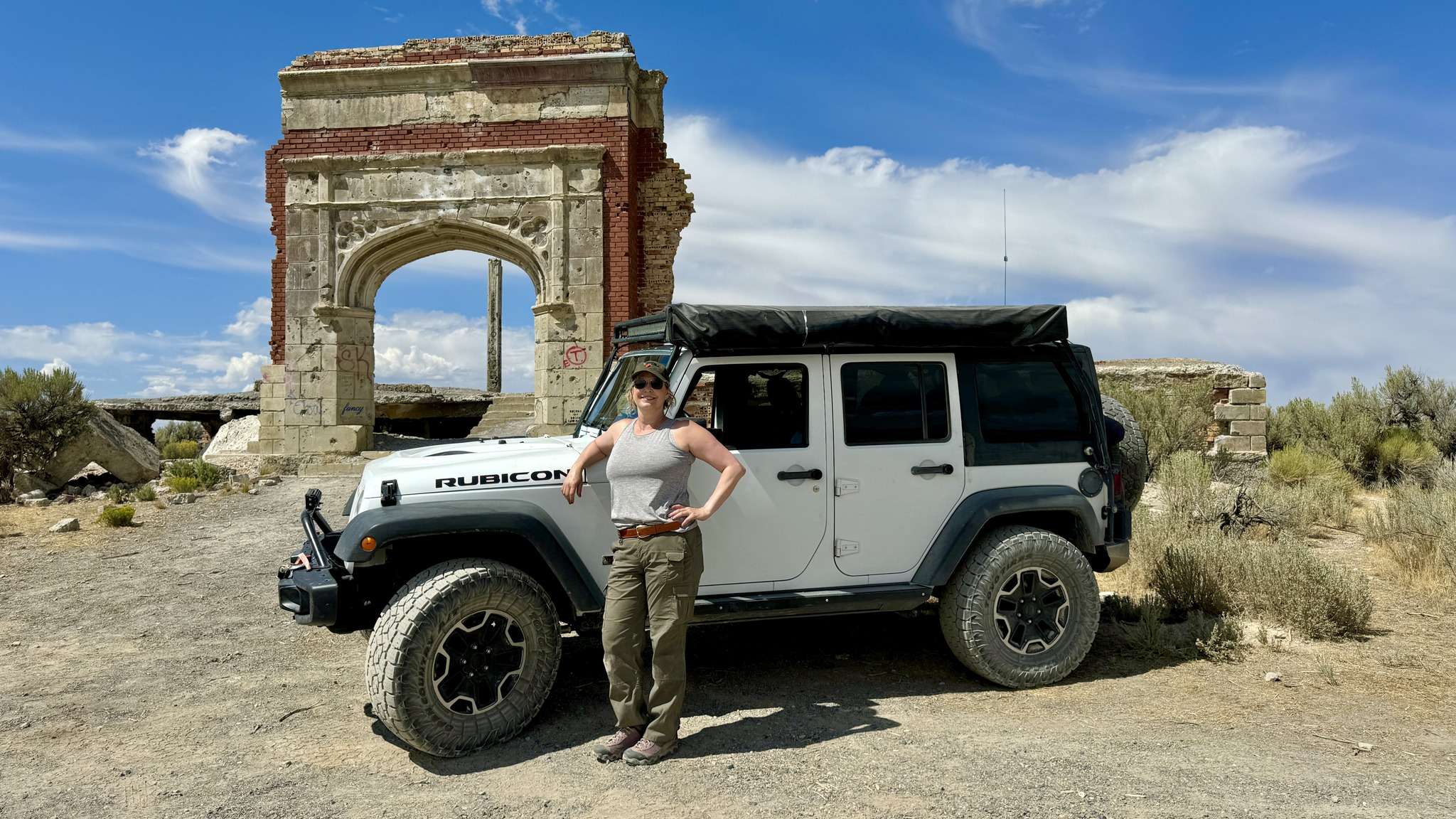
Ghost towns are not Disneyland. You don’t get on the Indiana Jones ride; strap in and enjoy the scenery from the safety of your “Jeep.” As an aside, would you believe that is my favorite ride?

There are a few ghost towns managed and maintained, such as Berlin and Churchill State Parks, Rhyolite (managed by BLM), Nelson and Gold Point, both of which are private.

Ghost Towns in the wild are….well, wild! And reaching them can be just as wild of a ride. You must be prepared for the isolated Nevada Desert, even traveling to the managed ghost towns.

It has been over 175 years since the first emigrants traversed and settled this land. Yet, the Nevada and the eastern Sierra remain rugged and remote. Rocks and trees destroy vehicle tires, as with pioneer wagon wheels. Water and food are always a concern, as the Donner Party and the Lost 49ers learned to their regret. Early settlers’ only communication with the outside world was by hand-carried messages. Many areas lack cell service, and “getting the signal out” can be almost as challenging.

I have explored ghost towns for over 30 years and photographed and documented amazing pieces of Nevada’s history full-time for the last five years. On average, I visit over 200 ghost towns and historic sites a year. This year isn’t nearly done, and I am well over that number!
I am not an expert at of-roading and survival, but I have developed my skill sets and equipment.
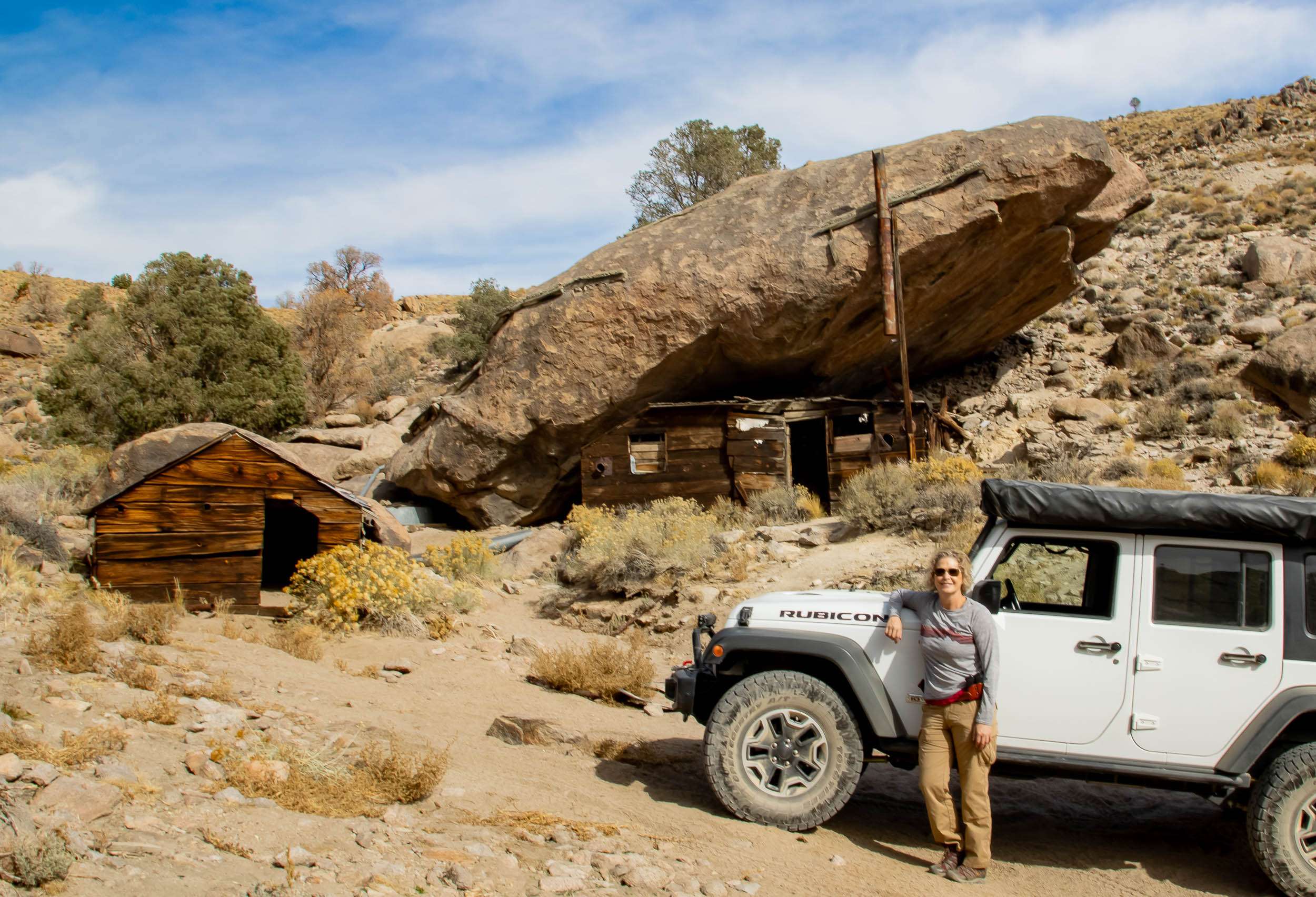
I drive Honey Badger, a Rubicon designed for off-roading. She is highly modified; I worked with Nate’s Precision and my friend Steve to customize her for Nevada’s backroads. Occasionally, I’ll take Momma Badger, a Grand Cherokee Overland, on easier roads. She isn’t as capable as Honey Badger, but she has a 10″ push-button lift and four-wheel drive, which is not the same as all-wheel drive.

I carry supplies for vehicle maintenance, recovery, safety and survival. I have trained with great organizations to deal with whatever I encounter. Below are some considerations for desert travel. This is not all-inclusive; here is a link to a full list of what I carry. While the items below will make your journey safer, there are still risks, so be prepared.
Vehicle maintenance
Always make sure your vehicle is in top form before you head out. If something seems off or you have a warning light, don’t go. Before you leave, check oil and fluids, tire pressure and tread. Remember to check the tire pressure on your spare. I was headed out one day and found my spare had 0 psi! Thankfully, I was able to get a replacement that day. If you don’t have a spare, don’t go!

I lose a tire a year, usually on my Grand Cherokee. It always seems to be the Sidewall Monster, which irreparably destroys my tires. Have a spare, preferably a full-sized spare, and be prepared to change it. I debated adding a second full-sized spare to Honey Badger.

Have the best tires possible. My Grand Cherokee came with all-weather town tires. After losing the first one on an easy dirt road, I replaced it with a more aggressive tread. Next time, I will look at downgrading my wheels to have tires with more sidewalls. Honey Badger has Toyo Open Country All-Terrain tires. I have had BFG KO’s which are great. As I drive many road miles across the state, I opted for the ones that also handle well on pavement.

Have supplies, including oil and fluids. Know how to change a tire. A tire repair kit, including valve stem replacement, is priceless. Consider carrying a compressor. A CO2 tank is handy until it runs out. If you have the ability, airing down tires can be a tire saver.

View the full list of the gear I carry.
Fuel

Gas stations can be few and far between in rural Nevada. Always head out with a full tank and top off when you can. Plan your trip around fuel stops. Honey Badger is designed for off-roading, which means she has a drinking problem! I can carry an additional 10 gallons of gas on my tailgate and six more on the roof rack.

Survival supplies
Carry survival supplies. Our vehicles have survival gear, even if used primarily for town travel. You should have at least three days’ water, food, shelter, clothing and necessary medication.

I clean out, refresh, and inventory my gear in the spring and fall. I carry the same equipment year around except snowshoes, which I have regretted not having in the summer months. While Nevada is a desert, it is also the most mountainous state in the continental United States. Weather can change in a flash. On one trip, we had 98-degree temperatures one day and snow the next.

She is at the shop, so I’ll update her regular configuration when she comes home.
View the full list of the gear I carry.
First aid & Trauma
Carry medical kits and train with them. Medical care can be hours away, and trauma centers can be farther away. Lifeflight isn’t always available.
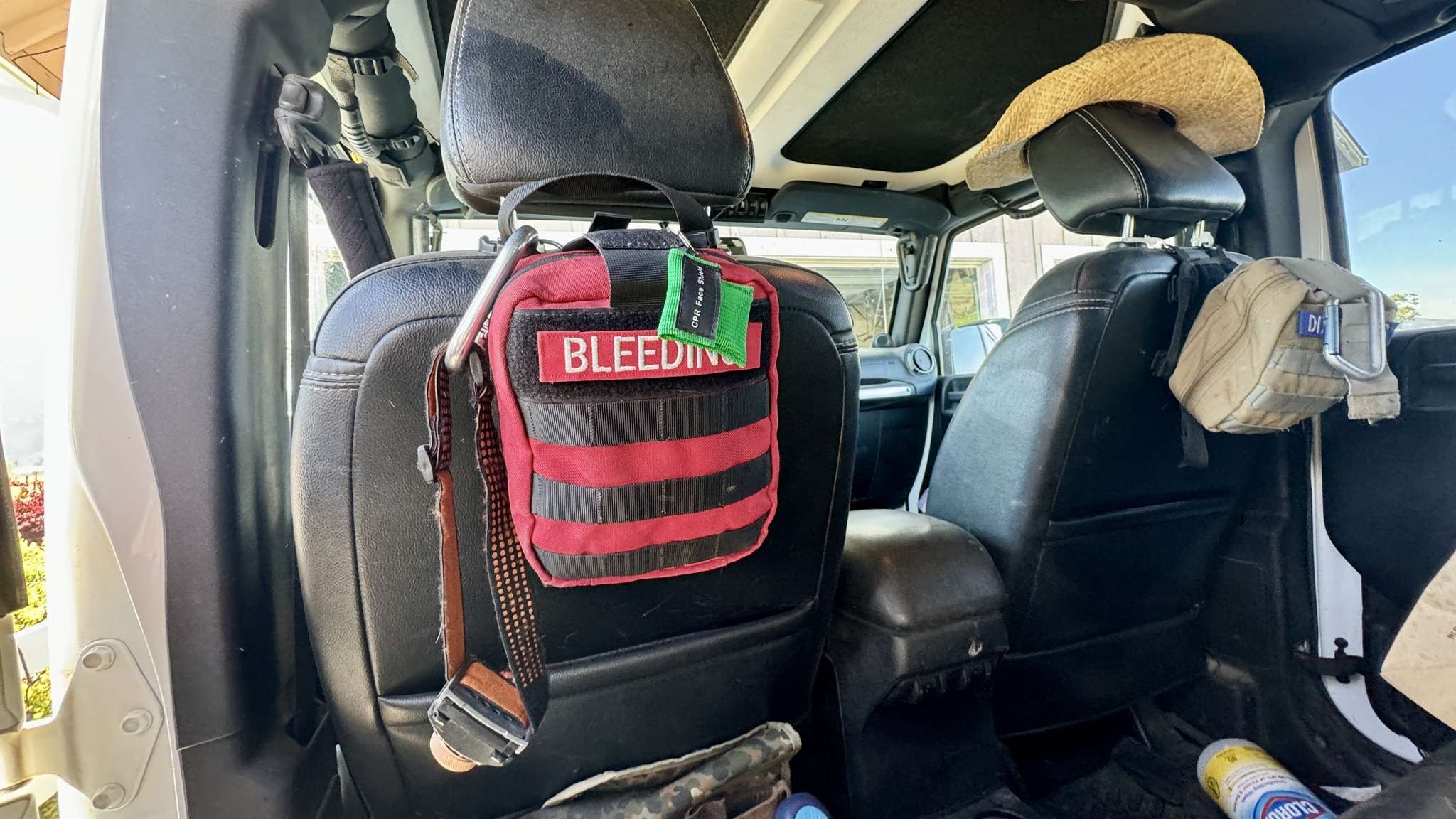
Stop the Bleed offers online and in-person classes. Each of our vehicles has a bleed kit designed for trauma. It is mounted on the driver’s headrest for quick access. Each Thunder Ranch class (see below) includes training on hemorrhage.
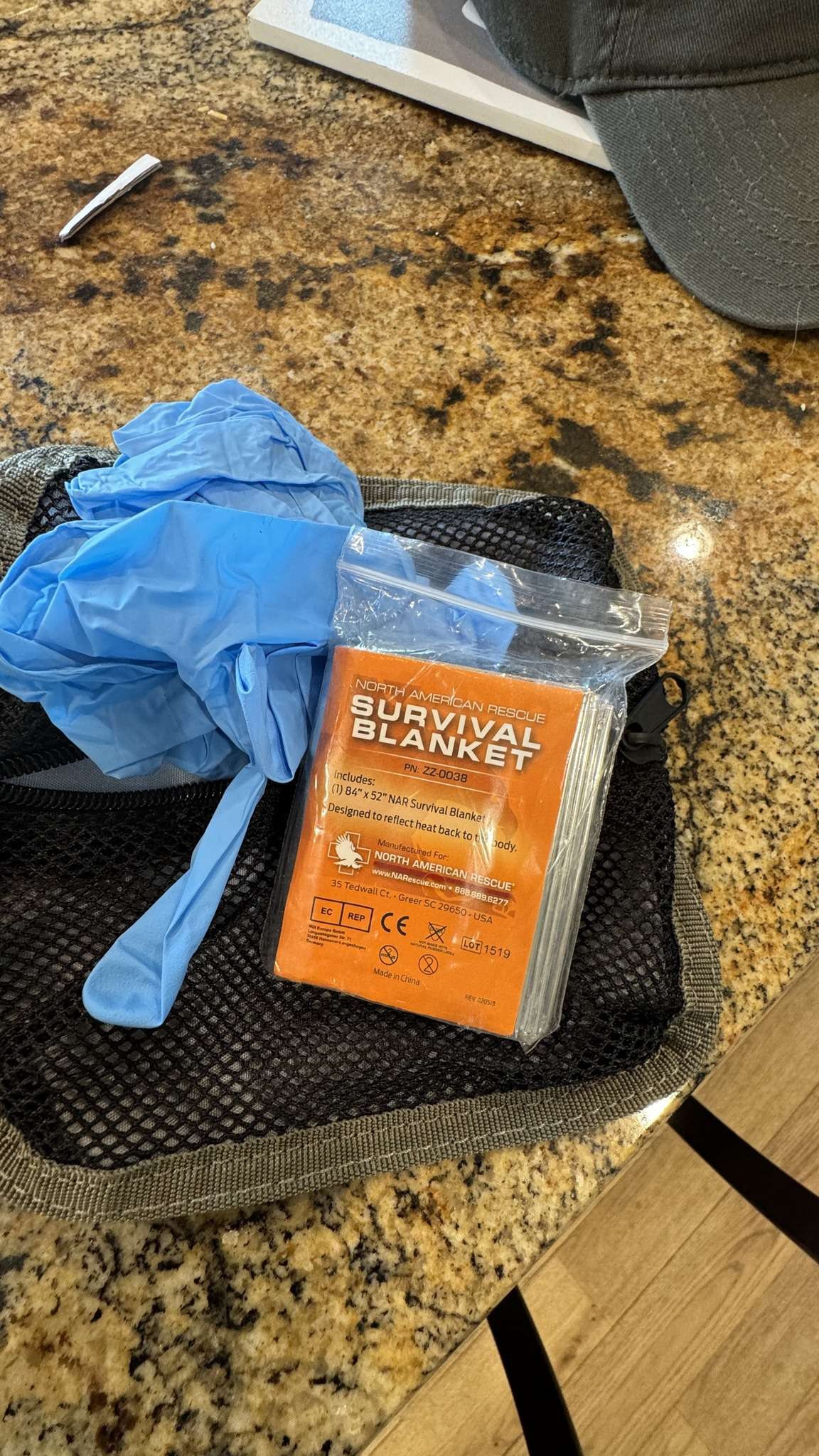
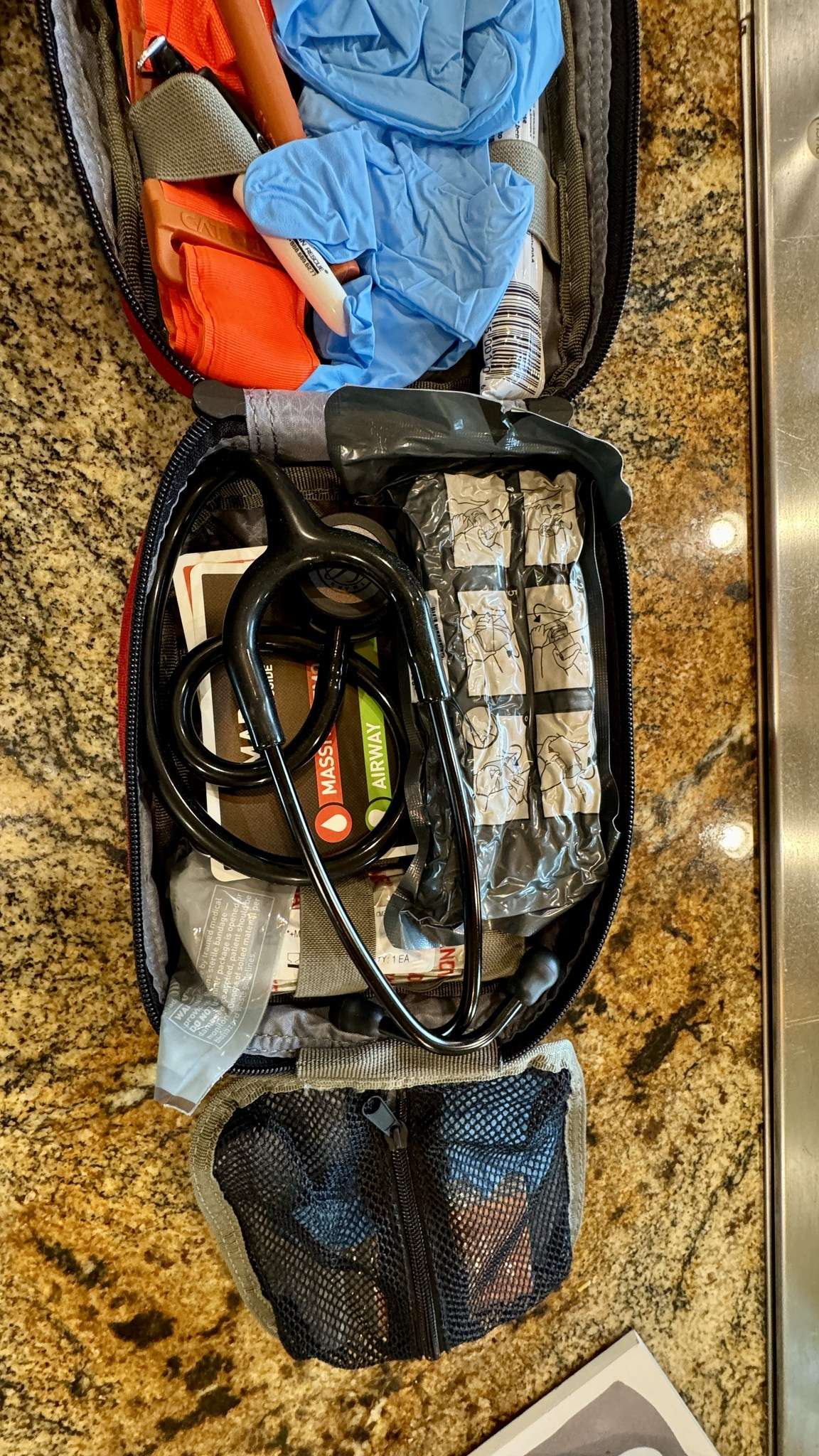
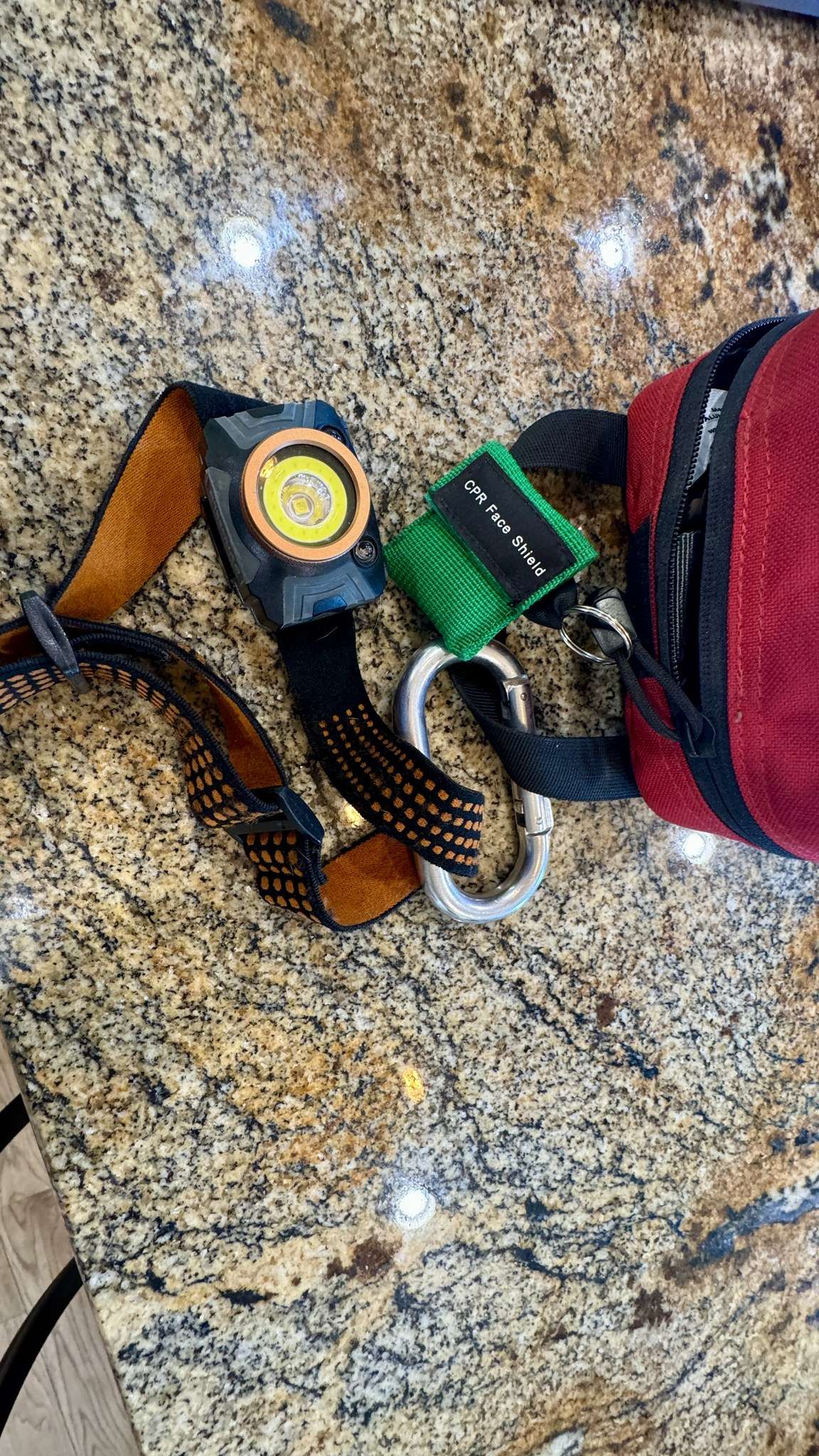
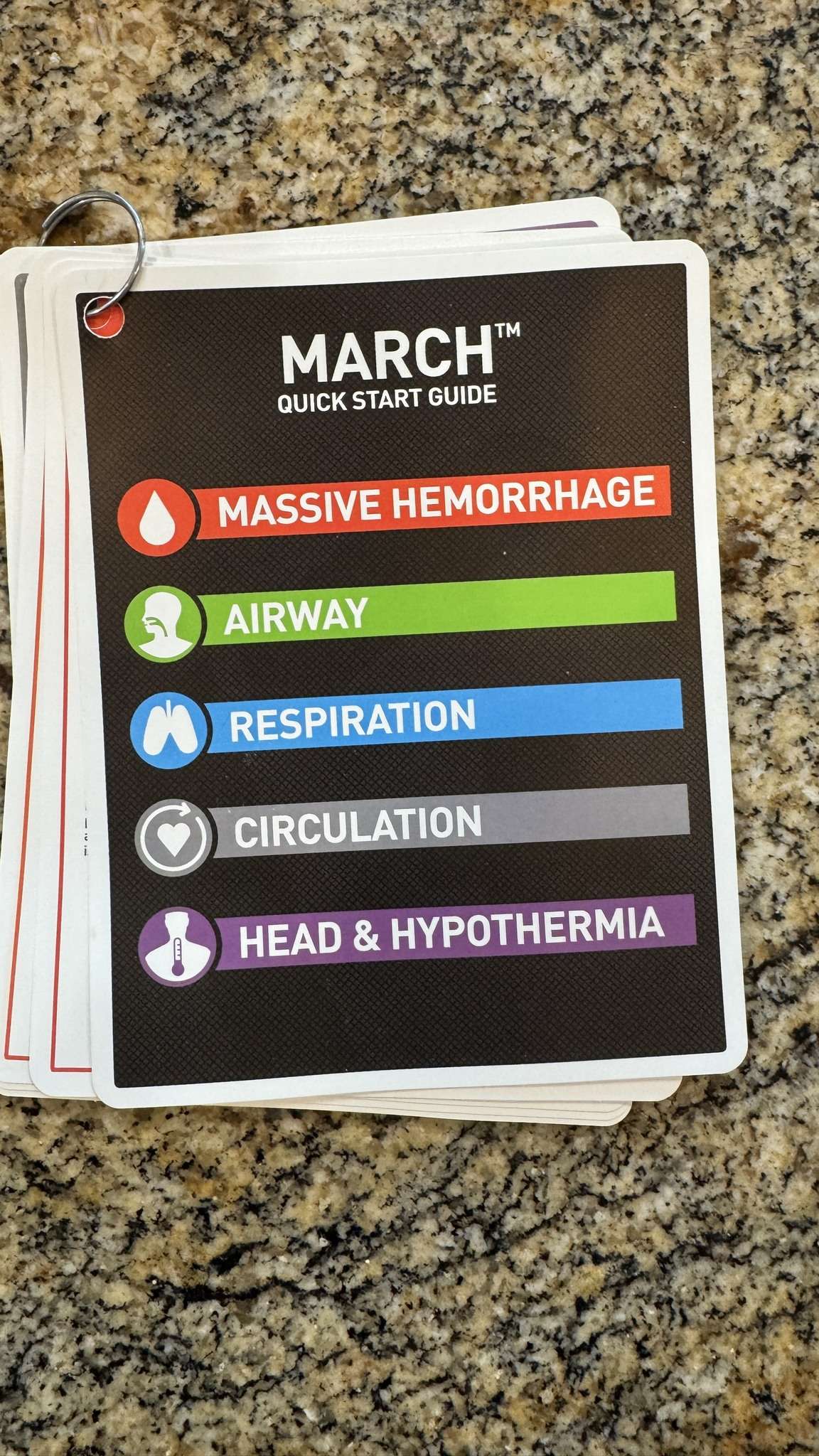
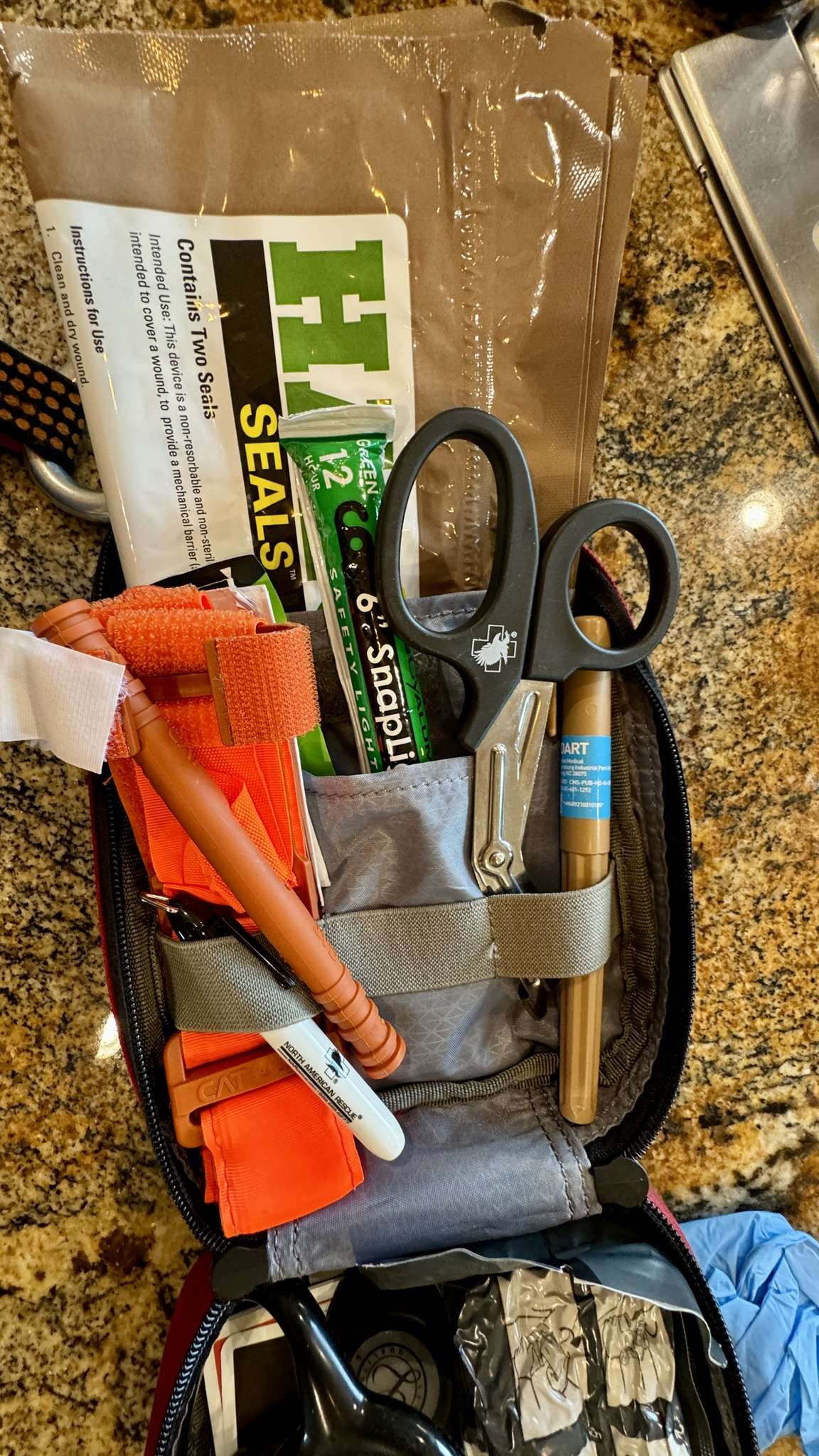
Many groups offer first aid courses, including the Red Cross. I opted for wilderness and survival first aid. I use Survival Med. A physician watched the course and said it was well done. An emergency room physician from Colorado led the class I took.

Ask all the people who got dysentery at Burning Man
We carry a medical kit for treating common conditions and a diabetes kit in every vehicle. If you or someone you travel with has a medical condition, customize the kits for you.
View the full list of the gear I carry.
Recovery Gear

Carry recovery gear and know how to use it safely. This should include equipment for self-recovery. Plan that there may not be a nearby tree to winch yourself out. There is safety in numbers; additional vehicles can be used for recovery or retraction. If you are alone, there are several options for earth anchors.

(Photo credit: Outside)
Please, whatever you do, don’t use a historic site as a winch anchor! They are not stable, and damaging or destroying them is illegal. Someone attached a winch line to a Saline Valley Salt Tram this year, destroying a century-old tower.

Train on safe and effective recovery. 775 Off Road Recovery offers classes. In a day class, you learn about recovery gear and safety. If you are stuck in Northern Nevada and need help, call this group. I have volunteered with them and been on several recoveries.

Please remember it is winch, not wench! Although you could have a wench on a winch…hmmmm, Halloween is coming up.

View the full list of the gear I carry.
Stewardship
While not specifically safely related, learn the principles of stewardship and Tread Lightly. Respect private property.
Ghost towns and historic sites are protected under federal and state law. Removing or damaging artifacts is illegal. Sites are monitored by volunteers and trail cams working with local and federal authorities. Removing anything, even a square-headed nail, is a crime. Please preserve our heritage so it will be here for future generations.

Tread Lightly offers online training and programs relating to protecting our backroads.
Don’t create new routes or expand existing trails. Avoid sensitive habitats like wetlands, meadows, and tundra. Cross streams only at fords where the road or trail intersects the stream. Respect and be considerate of other users so that all can enjoy a quality experience in the outdoors.
View the full list of the gear I carry.
Mine Shafts

Abandoned mines are often sealed off or grated, but not always. They are dangerous workplaces that claimed the lives of many experienced miners and pose an enduring threat to the curious. They cut through strata, load-bearing formations, and toxic mineral deposits and can house innumerable hazards, from rattlesnakes to unstable explosives, oxygen-depleted air and radon. Unlike caves, old mines are unmaintained works of engineering designed solely for extracting ore. They are not recreational sites. (Besides, would you ride a roller coaster without maintenance for 50 or 100 years?)

Traveling with dogs

My Greater Swiss Mountain Dog loves to ride in any vehicle. I take Edel to easy locations but not to explore mines. There are too many dangers, including rusty nails, mine shafts, unstable buildings and rattlesnakes.

If you take your beloved dog, I highly recommend rattlesnake avoidance training. I trained my previous Swissy, KC, through Get Rattled. They expose the K9s to rattlesnakes and then shock the daylights out of them. We checked the next year, and there was no way he was getting near a snake!

Communications
A critical piece of equipment you should carry is a form of communication. Cell service is often limited or non-existent. I carry a Garmin InReach Plus. It tracks my movement and updates every 10 minutes. It also has SOS and satellite text messaging.
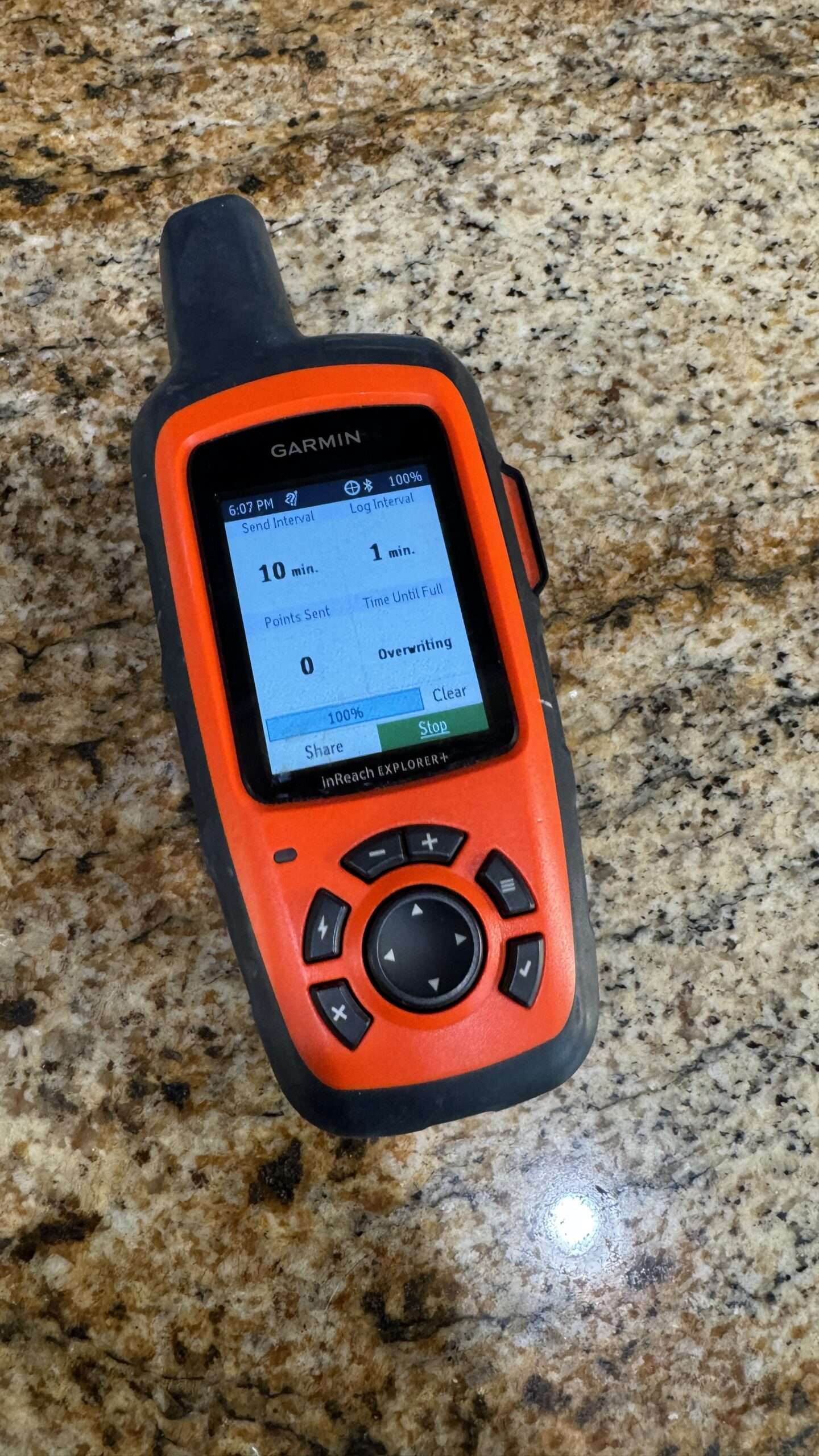
Before next season, I suspect I will have a portable Starlink (thank you, Uncle Elon!) to access the internet anywhere in the world. (Hubby keeps encouraging me to get a Ham License and an “HF rig so you can send CW” whatever that is. Maybe next year.)
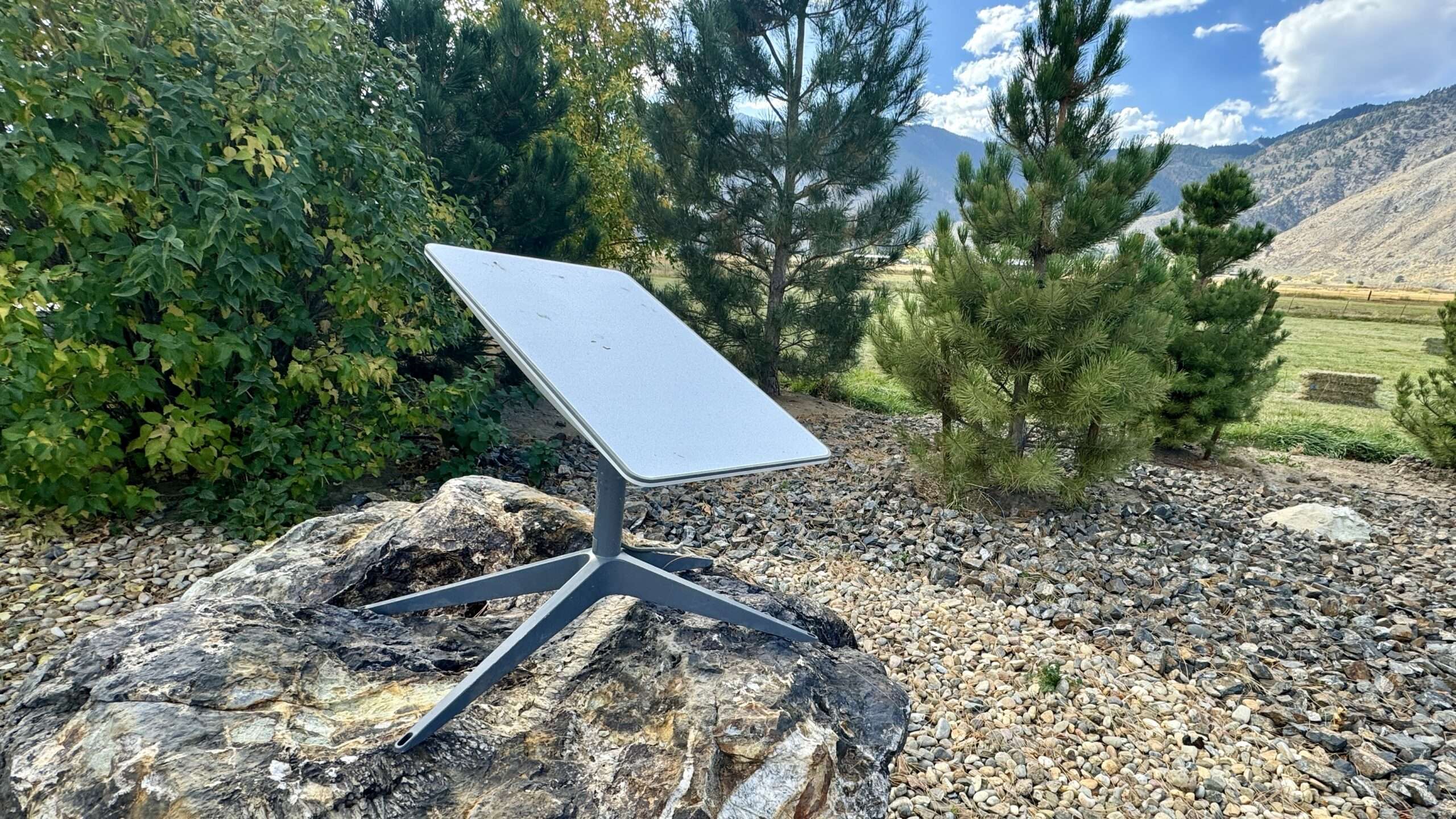
Make a “route plan” detailing where you are going, who you are with and when you expect to return. Give it to someone you trust who can check on you if you aren’t home when expected.
View the full list of the gear I carry.
Miscellaneous
Carry enough cash to get you home. I have encountered situations where credit card purchases are unavailable. When nature calls, ensure you have toilet paper, hand sanitizer, trash bags, and a shovel.
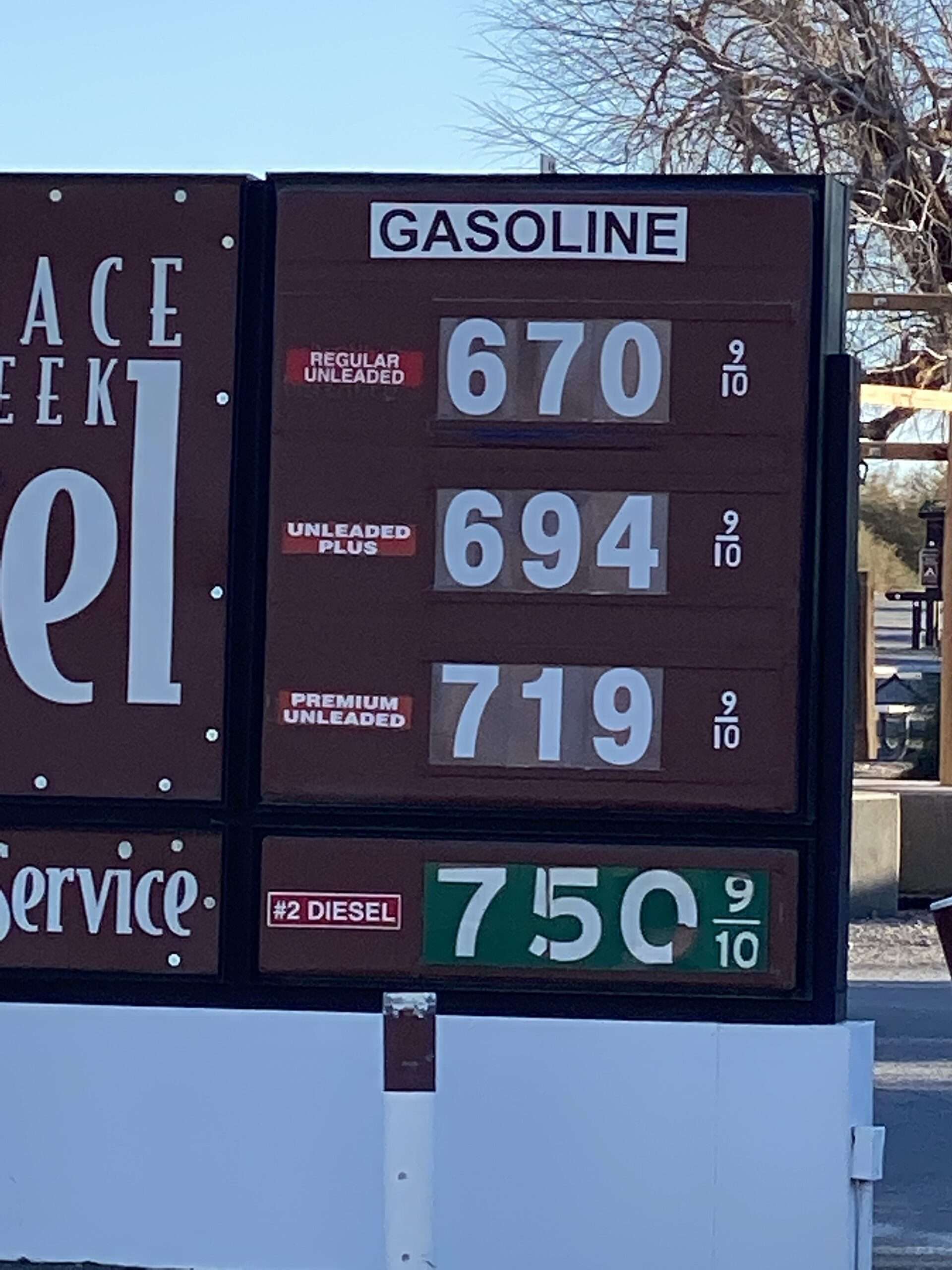
Carry more snacks than you think you will eat. Off-roading and exploring are physically demanding.
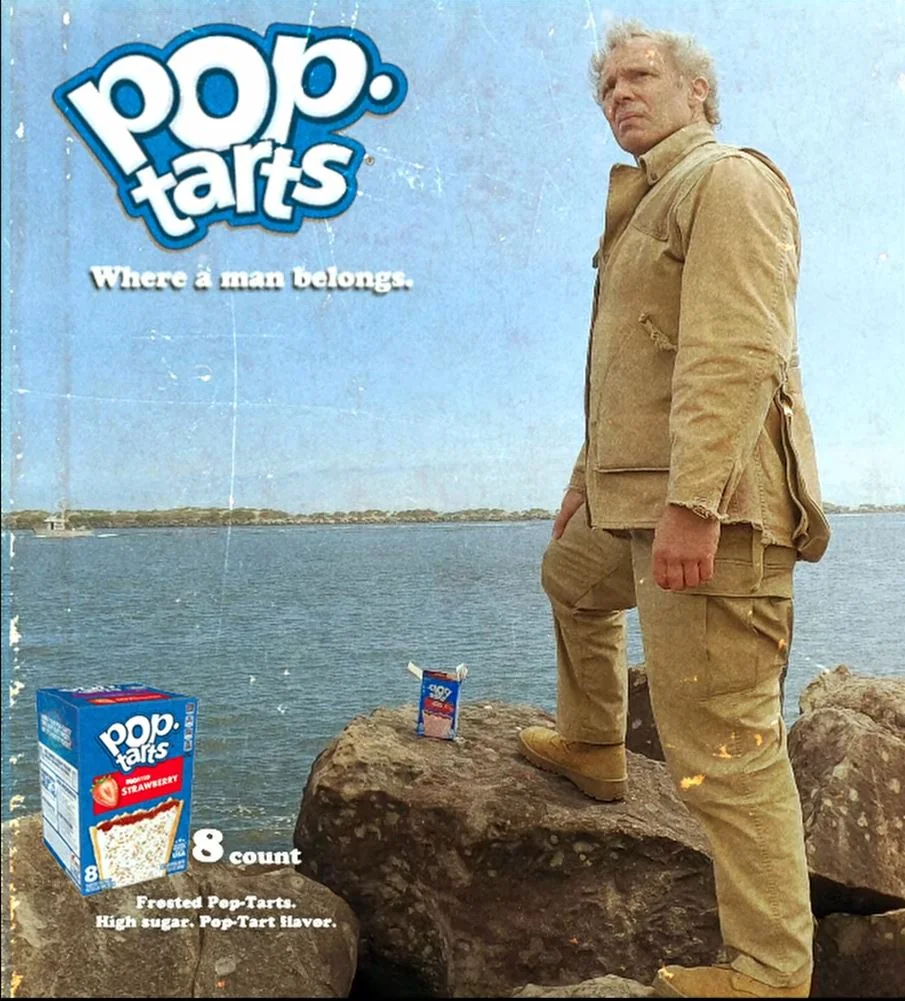
Wear sturdy shoes and be prepared to hike out if needed. (Never abandon your vehicle unless absolutely necessary.) Check weather conditions before you leave, and pay attention to the sky. Carry an Air Force or Army Survival Manual and a Field Guide to Wilderness Medicine. Carry and learn how to use maps, a compass, and a GPS.

Wear appropriate clothing and shoes for traveling in the outback—it isn’t a fashion show! Always carry sun protection, gloves, a hat and a jacket. Even the warmest days in the desert can get cold when the sun goes down.
View the full list of the gear I carry.
Personal Safety
In my travels, I have encountered only a handful of concerning situations. Some problems slither, some arrive on four legs, but the two-legged variety can be the most problematic.

(Photo credit: Thunder Ranch)
After a few encounters, I decided I needed training to protect myself. I chose to train at Thunder Ranch under the legendary Clint Smith. My first class was Defensive Handgun. I loved it so much that I returned for three more classes, with more scheduled next year. You can find me on Thunder Ranch’s Website and even on Smith & Wesson videos!
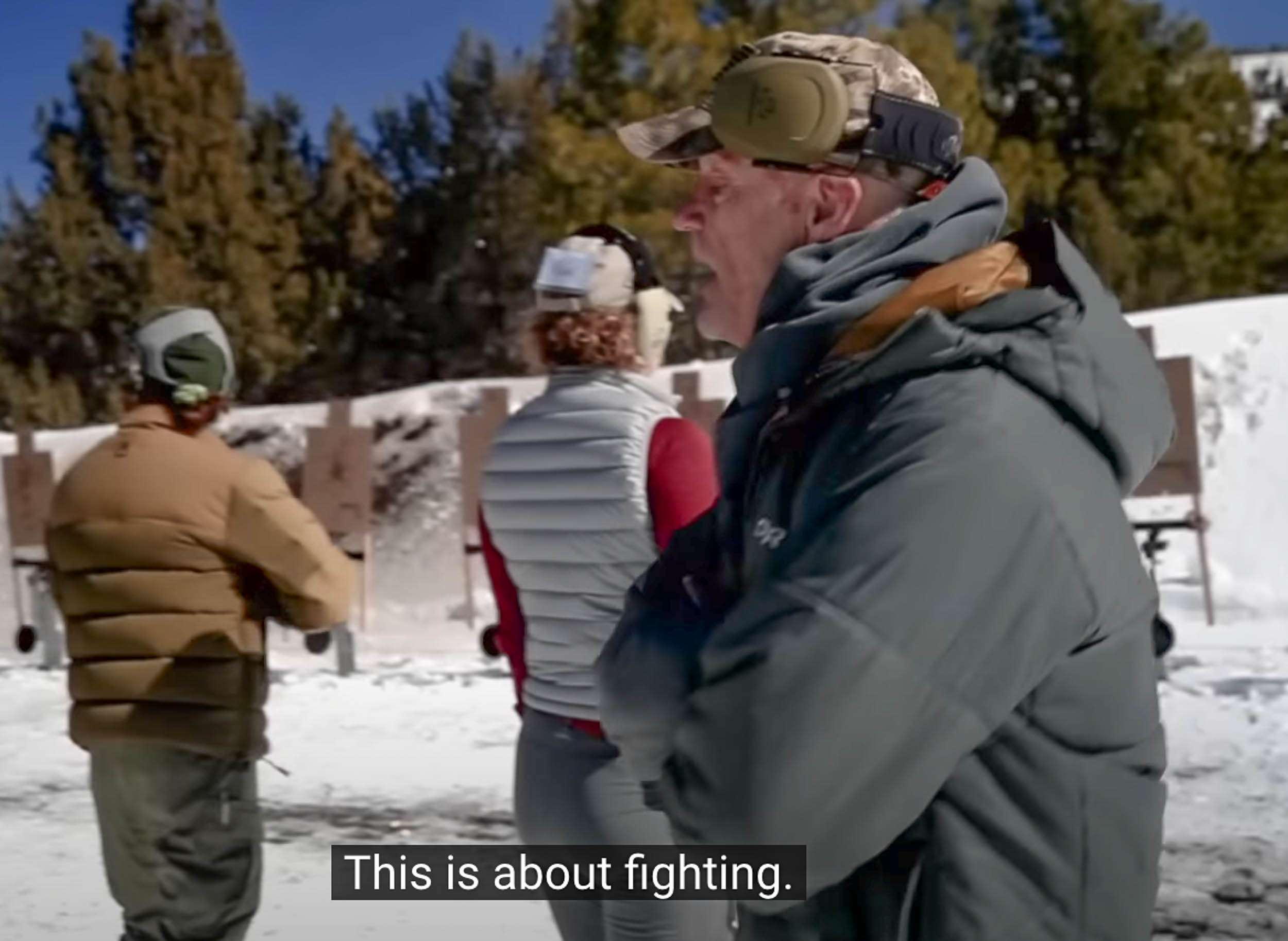
Read about me being a lone female training at Thunder Ranch. Other than off-roading, it is my happy place.

I’m not saying you need to carry a firearm and devote as much time as I have to training, but I have a safety plan. Please keep in mind that your safety is your first and foremost concern.
Other off-roaders
Off-roaders are the nicest group of people! I have been stuck and had people who didn’t know us come to our rescue. Be polite. Say “hi” to people; they are often happy to share information and road conditions.

If you are driving off-road, wave! It doesn’t have to be a Forest Gump wave—just a small wave or lifting of the hand or fingers. If you are holding on for dear life on a washboard, it can be a single finger or a nod of the head. It is polite and an acknowledgment of others. If you have an issue, these people may be coming to your rescue.
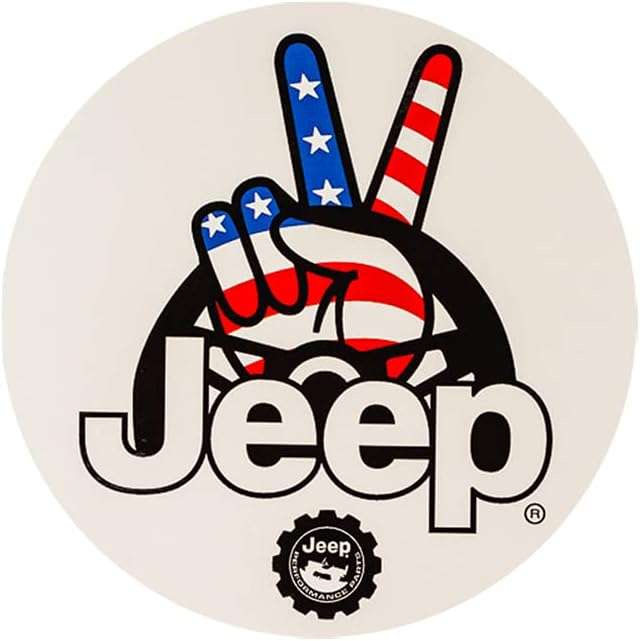
If you are fortunate enough to drive a Jeep, we have our own wave. Some believe the Jeep Wave started in WWII when soldiers flashed a “V for Victory” to other drivers. The meaning ranges from acknowledging other Jeeps, knowing you are part of the Cool Kid Club, to celebrating that your Jeep is running and not at the shop! (Seriously, I think every Jeeper sees their mechanic more than anyone else…)

In Conclusion: My All-Purpose and Inclusive Explanation, Warranty, Admonition, Disclaimer and Warning to Anyone Who Visits Ghost Towns, Mining Camps, Historic Sites, the Nevada Outback or Someplace Mark Twain Wrote About 150 Years Ago That You Always Wanted To See…
Why don’t you give locations or directions?
Before I started my site, I decided I wouldn’t give coordinates or directions. Finding ghost towns is part of the hobby and searching, like an adult Easter egg hunt, but not the fun one where you search for mini bottles of booze. It is about connecting with history and other explorers.

Sadly, many ghost towns and historic sites have been damaged. Some are unintentional, with people not realizing they are damaging history or that removing items from historic locations is illegal under state and federal law. Worse, some people know better and still damage or plunder sites for profit.

The primary reason I and others don’t give locations is to protect sites. Those who work to find the sites are more likely to respect and protect our history. I rolled out my map a few years ago. I could have easily taken GPS coordinates and dropped them into the map. It would have been much easier than dropping the pins in a general location. Again, this is so people can see what else is in the area and plan trips, not for directions. I keep things vague for a reason.

“Road” Conditions
I don’t maintain a comprehensive list of current road conditions. It would be impossible to maintain an up-to-date map. A single storm can make a good road impassable overnight. Please check with land management agencies for current conditions. Be aware that ghost town locations are frequently remote and infrequently traveled. No one may have driven the access roads in years.

At one point, I thought of giving directions with cute little Jeeps showing trail ratings. The more I was in the desert, the more I realized that I could not keep information current even if I wanted to.
I am not your tour guide. If you choose to visit one of Nevada’s many historic sites, you are responsible for your safety. You should have the necessary training, equipment and common sense to get you there and back without damaging yourself, your property or the site.

(photo credit KTVN)
Above is a photo of a Chevy sedan whose driver thought they could reach Lagomarsino Petroglyphs. I heard it was a rental car; I hope they had good insurance! It had to be recovered by 775 OFR.
Driver ability is more important than the vehicle’s build. I have seen expert drivers reach locations in AWD I would be reluctant to try in Honey Badger. Conversely, I have seen well-built rigs stuck due to driver error.

Heed the warnings and advice of others. They are likely based on experience, sometimes hard-won. Don’t become a problem for search and rescue or law enforcement because Google told you the best way to get there was by a road that washed out in the heavy rains of spring 1917. Rescuers often risk their lives getting people out of places they should never have gone. Don’t be “that person” who gets their name splashed across the news or on off-road groups because they thought they could chance it.

With Baby Badger of Nevada Expeditions
Carry supplies and equipment, but most importantly, common sense, training and a trail buddy in another vehicle.

I invite you to get out and enjoy our rich heritage. Please take only photographs and leave only footprints so we can preserve our historical resources.

See you on the trail!
Follow me on social media:
Alfonse says
Amazing advise. Take it seriously, very seriously. One site we could’t even make it on our 4×4 Ford F150 Twin turbo with a 4 inch lift kit. But we only had 6 ply tires so we turned around when the going got rough. We hope the nice lady with 2 kids in a Toyota Camry that we persuaded to turn around reads Tami’s suggestions herein. Serious troubles could await otherwise. Thanks be to Tami.
David Sadewasser says
Great article, Tami. Literally could save lives. I personally owe mine to members of Southern Pacific railroad crew who dug me out of a wash about 20 miles south of Elgin in the Meadow Valley Wash.
Tami says
Thanks, I tried to think of everything. I am looking at a Deadman for times when there isn’t an anchor point for a winch. I’m so glad the workers found you! That wash is notorious for washouts. I will be following part of the railroad up through Elgin in a few weeks. I debated which vehicle to take, but think I’ll bring Honey Badger. I’d rather have the capability and equipment even if I don’t end up needing it.
Diane Albrecht says
I believe the actual name of ‘Cabin under the Rock’ is Bass Camp.
Tami says
Bass Camp is the official name, but it is commonly known as Cabin Under the Rock.
Steve Whitehorn says
Great advice for everyone to review and remember. The classic picture of the jackass who pulled over the salt tram tower is one to remember for sure.
Tami says
I can’t believe they did that. From the pictures, it looks like they were off the road and in a place they shouldn’t have been. Who knows what damage they caused to the desert. I want to see the salt tram, I hope they were able to put the tower back up.
Robert Younger says
I’ve added an AED to my list. Since training in first aid and CPR, I realized that I would be profoundly sad if I could have saved someone’s life IF ONLY I’d had my AED along. Of course, self-administration isn’t an option, but I do have it readily visible just in case someone needed to use it on me.
Tami says
An AED has been top on my wish list for some time. I keep checking the price but they are so expensive. Where did you find yours?
Jim says
Great advice for safe and great adventures. Human behavior appears to be the only non-standardized “equipment” not available to pack, including your advice on same.
Safe travels.
Jim
Tami says
True, common sense isn’t always common.
Alan I says
Water. Water. Water. Water. And when you think you have enough, Pack just a bit more. Incase. Remember, we live in a desert. What is it you don’t have much of in a desert? Water. You can last a long time without food, some of us longer than others. You will only last a few days with no water. Maybe not even one day if you have hit all the wrong conditions. You will become severely dehydrated if all you drink are sodas and sports drinks. If it is not water, then it is pulling water out of your body. In the Army we were taught that in a Temperate climate, at a moderate rate of physical activity you need 1 litter of water per hour to prevent dehydration. We do not live in a temperate climate. If you are not needing to stop every hour for a Nature Call you are probably on your way to getting dehydrated. If when you do stop, your urine is dark, you are probably dehydrated. Getting cramps? You are probably dehydrated. Don’t forget to bring plenty of water on your winter trips too. Just because you are not sweating in the sun doesn’t mean you don’t need to drink plenty of water. So, before you head out for even” just a short trip ” what is it you should have plenty of with you?
Tami says
I have 3 days food and water on the list. But, I think you made a good point, I should draw more attention to that entails. Some people have no idea how much water they really need. I know people who say they have water which turns out to be a regular water bottle.